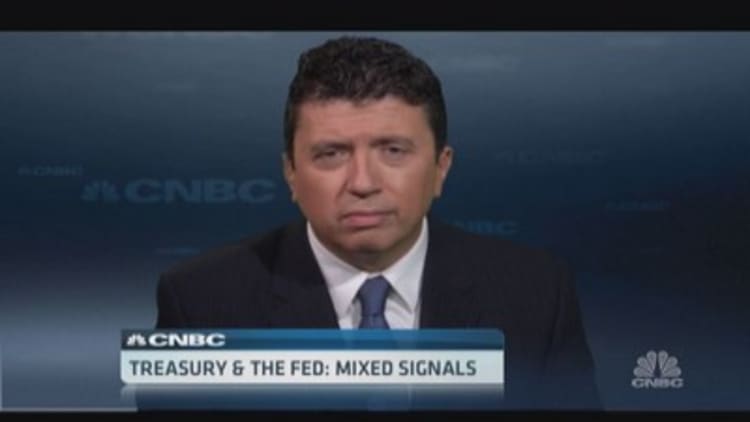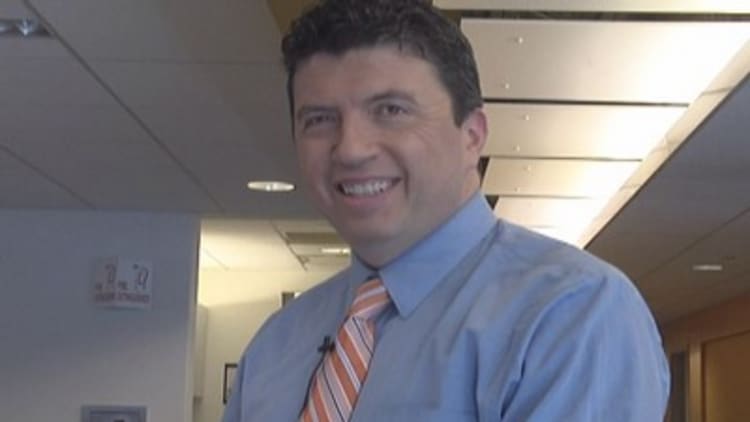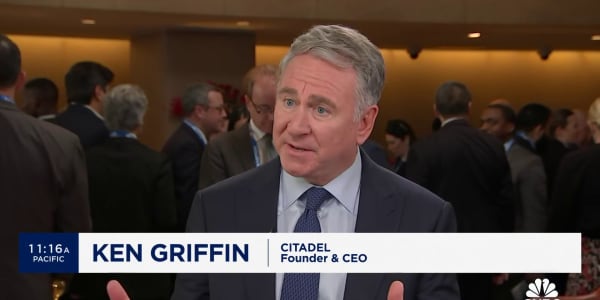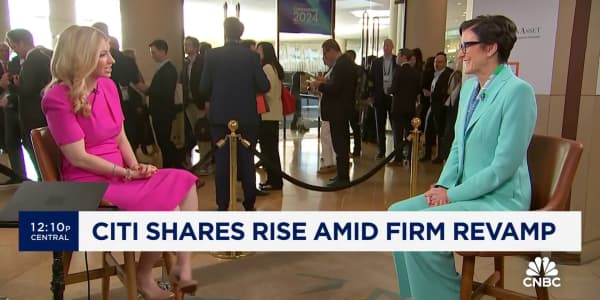
The Treasury Department and Federal Reserve in recent days have expressed quite different views on the economy, a divergence that could complicate not only policy but also the central bank's leadership.
At a time when the Fed has been tepid about economic prospects, Treasury's Seth Carpenter earlier this week issued a statement chock full of nuggets on how vibrant growth has become.
The deputy secretary for economic policy said the recovery is being led by "private sector growth and job creation." Carpenter touted 7.6 million jobs added since the end of the Great Recession in 2009—86 percent of the jobs lost—and bragged that the budget deficit was half the level compared to gross domestic product as it was back then.
Housing, he said, has "improved considerably over the past few years."
As for slowness in parts of the recovery, he placed most of the responsibility elsewhere.
"A number of economic headwinds—many of them out of our direct control—have held our economy back since the recovery began four years ago, such as the earthquake and tsunami in Japan in early 2011, the fiscal crisis in Europe, and others," Carpenter said. "Most recently, however, the debt ceiling impasse and shutdown of the federal government likely weighed on growth and hiring at the start of the fourth quarter."
Contrast that with the Fed.
In its most recent policy statement (before Friday's unemployment report), the central bank's Open Markets Committee called economic growth "moderate." It said the 7.2 percent unemployment rate "remains elevated" while housing sector activity "has slowed somewhat." (Friday's report for October put the rate at 7.3 percent.)

Of course, the FOMC's outlook has tangible effects: The Fed surprised the market in September when it decided against winding down its $85 billion monthly bond-buying program in order "to await more evidence that progress will be sustained before adjusting the pace of its purchases."
The Fed also has not budged on interest rates, keeping its short-term target near zero as it expands its balance sheet at a close to a $1 trillion a year pace.
Reconciling the two views becomes important now as Congress is asked to approve the successor to current Fed Chairman Ben Bernanke.
President Barack Obama has nominated San Francisco Fed President Janet Yellen to the spot, and confirmation hearings are set to begin Nov. 14. Fed critics, primarily on Republicans, worry that cheap money and record levels of liquidity-pumping could be creating negative consequences down the road.
This week's batch of economic reports no doubt will add to the debate, with GDP ringing up an impressive 2.8 percent third-quarter gain. However, even that strong quarterly gain pushed the year-over-year growth to only a tepid 1.7 percent, and much of the quarterly rise came about through inventory rebuild.
(Read more: US growth surprises while jobless falls)
Reports outside of the daily grind, though, may have said more about market direction.
Two papers submitted by Fed economists suggest that the central bank would be best off waiting until unemployment drops to at least 6 percent and perhaps 5.5 percent before raising rates, a substantial drop from the 6.5 percent yardstick the Fed is using.
Andrew Wilkinson, chief economic strategist at Miller Tabak, said the GDP numbers "at the margin may bring on faster taper fears from the Fed. We're becoming comfortable with the view that the yield market is growing slightly less bothered by the peak stock for the Fed's balance sheet," he said.
"Focus is instead shifting to how long short rates will remain low. And on account of latest papers from leading in-house economists at the Fed, that date is creeping out to 2017."
(Read more: Fed could be about to make a major policy change)
The Fed, then, may win the argument now that the economy is not as close to escape velocity as Carpenter indicated, as market forces have tended to shape policy more than economic data.
Patience for central bank policy, though, may be thinning both in the halls of Congress and in the financial markets.
"Overall, the pick-up in GDP growth will presumably add to the speculation that the Fed might yet begin tapering its asset purchases in December, even though the (European Central Bank) is loosening monetary policy in the euro-zone," Paul Ashworth, chief U.S. economist at Capital Economics, said in a report. "Frankly, it's hard to know exactly what precise improvement Fed officials are looking for after all the flip-flopping."
—By CNBC's Jeff Cox. Follow him on Twitter @JeffCoxCNBCcom.






